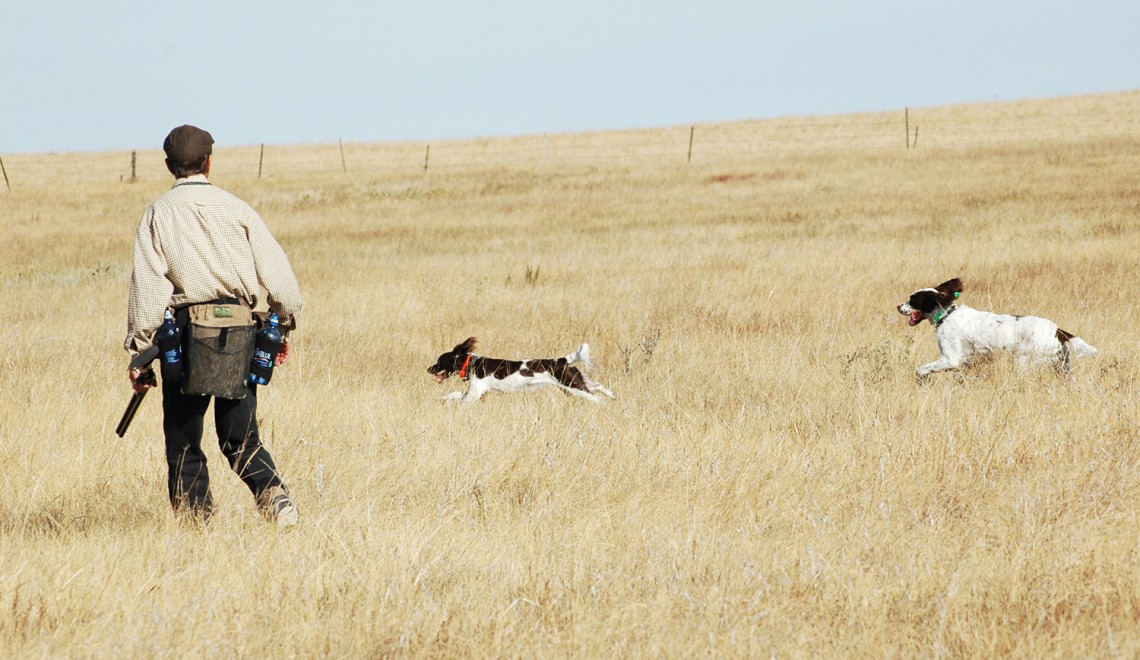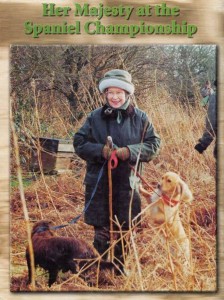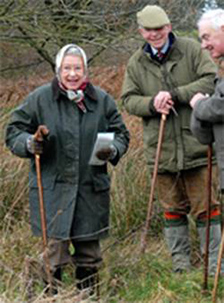Through the Eyes of Another

In the late eighteen hundreds, western settlers often reported seeing our prairie skies black with grouse. Well over one hundred harvest moons have waxed and waned, and our wild prairie has changed since these sightings were reported in the press. The vast seas of native grasslands that once stood out large on the landscape, have diminished over time in the name of progress. Back then, indigenous grouse of the prairie numbered in the millions.
The Parker Brothers were building Damascus doubles at this same time. A particularly fine example of this vintage was recently acquired by Charles Scott II. The gun is a 16ga GH on an O frame built in 1892. It has 30″ Damascus barrels, is choked open and modified, and weighs a mere 6 pounds, 3 ounces. Out of the 242,000 guns Parker Brothers manufactured, only 499 guns in this configuration were ever made. It has what Michael McIntosh longed for in a prairie gun with a slender action and hand. It also has a rare fishtail top lever. Researchers at the Parker Gun Collectors Association report that it was shipped new to a Kansas City general store. Charles Scott traded for this gun on his way out west to hunt prairie chickens and sharptail grouse on the Rosebud Indian Reservation last autumn.
Scotty, as his friends call him, is a conservation leader and sportsman who is wild about grouse hunting and setters. Now retired, he was the VP of The Nature Conservancy and Senior VP of The Audubon Society. When I first looked into this man’s eyes, I saw something extraordinary; something beyond our common interest in vintage doubles, conservation and upland sport. I soon discovered that he is the recipient of a double cornea transplant! This is a man who wouldn’t be hunting in the first place if it hadn’t been for the grace of God, the miracle of modern medicine and an organ donor. It seemed fitting that Scotty had come to the Rosebud prairie to pursue timeless game birds sporting a Damascus Parker and as a blessing, the eyes of another.
To behold a covey rise of prairie grouse today is about as special as it gets when it comes to American wing shooting traditions. The grasslands of the Rosebud Reservation look very much the same now as they did when Chief Red Cloud hunted buffalo there on horseback. A grouse hunt in country like this is enhanced when using a turn of the century double. An old world/new world contrast is the evocative result. Aldo Leopold cautioned us against “taking the factory into the woods”. Hunting with a vintage sporting arm in a pristine setting, in pursuit of indigenous prairie grouse, is kind of like stepping back in time a hundred years.
Leopold teaches us about the “contrast value of the outdoors” in his book, A Sand County Almanac. When preserved over time, our natural world is a constant and becomes a portal for contrasting what went before us with what is now. The learning we achieve from this concept serves to lead us in our stewardship of the land. The prairie chicken provides an example of how we have impacted the land over time. We can only pray that the conservation lessons we have learned for the prairie chicken will not go the same way as the Heath Hen.
When Scotty was working at The Nature Conservancy, the organization launched its efforts to “Save the Native Unturned Prairies”. Prairie grouse habitat has always been close to his heart. One truism Scotty shared with me is: “Game birds that have been lost forever, have not been lost due to hunting, but due to habitat loss. Habitat preservation is everything. That is what Aldo Leopold meant when he said: The first step in intelligent tinkering, is to save all the parts”.
On the Rosebud Indian Reservation, you’ll find a rich diversity of tribal grasslands that have been preserved over time, due in large part to the Lakota way of life and the tribe’s enduring respect for the land. This virtue has been passed down through many generations in their ancient culture. Tribal members who ranch are rewarded financially for not over-grazing the land. The “Rez” as locals call it, encompasses 1.8 million acres, most of which is unturned prairie. To look out onto this place from a grouse hunter’s perspective is overwhelming because of its vastness. Big majestic buttes shelter peaceful valleys planted in sunflower, corn and soy beans. The country side is checker-boarded with agriculture and large tracts of pristine grass – the perfect habitat for prairie chickens. When accompanied by a Native American guide, which is required by the Lakota tribe, hunters have access. Our guide with Prairie Grouse Haven (303-450-5013), Chance Colombe, has been focused on locating concentrations of prairie chickens. Most days, he can be found on horseback. Chance values his ancestral beliefs and his family heritage, which includes chiefs Red War Bonnet and Red Cloud. There is a native spirit woven into a proud history just waiting to be discovered on this tribal ground. Many Lakota scared places are scattered across this rolling landscape. If you happen to be the right place at the right time and you are open, the Native American spirits may move you.
I had such an experience while taking photos at a scared place called “Ghost Dance Rock”. After the massacre at Wounded Knee in 1890, the US government outlawed ghost dancing because it was considered powerful medicine and officials back then feared it. Ghost dancing is a Lakota spiritual custom used to connect with relations passed into the spirit world. One story behind Ghost Dance Rock involves a Lakota father who lost all three of his adult sons to natural causes and all in the same year. A grieving father, he held a ghost dance there to connect with his boys. Chance’s dad, George, taught him to have a healthy respect for this prayerful place. The grass in this area just happens to support excellent grouse numbers. So… we were there and I was snapping pictures when quite suddenly, the shutter on my Nikon broke. The last image captured by that camera’s eye was of Chance standing in front of Ghost Dance Rock!
On the day before Scotty’s group arrived from the east coast, autumn came alive on the Rez – complete with thunder and lightning, and rain that never hit the ground. I recall looking breathlessly out onto the unforgiving prairie, bolts of lightning shocking the earth like daggers. A familiar sight over many autumns passed. Native and other hunters, past and present, forced to breathe deeply, experience awe and appreciate the powers God and Nature can deliver. As the storm dissipated, bright beams of sunlight peeked out through holes in the darkened sky, polka-dotting the native landscape. The sky opened and another column of light appeared from above, illuminating my spaniels and then engulfing me as well. Instinctively, I reached for my camera before remembering that it was broken. Instead, I lit my pipe and watched puffs of tobacco smoke drift in the golden light as I imagined the adrenaline rush that occurs when a covey flush full of fan-tailed chickens electrifies the air. I then realized that this rush has remained unchanged over time and is the very same as experienced by hunters before us – even a century ago.
Once we were all settled into our individual rooms at the lodge on the banks of the Keya Paha River in south central South Dakota, I was delighted to see such fine double guns in camp. I felt a sense of belonging as each of us shared our best gun while waiting for dinner. There was James Brigham’s 1926 A.H. Fox Sterlingworth Philadelphia, Richard Jung’s Webley & Scott, Scotty’s Damascus Parker and my 1909 J.D. McArthur. For our older guns, the others use RST Lite loads, while I prefer B&P Classics. There was good dinner conversation about how hunting with a vintage gun can be a self-imposed limitation and can open the door to appreciating the experiences of hunters long ago. Everyone agreed over homemade pie that this thinking is critical to preserving our past and shaping our future. Someday we will pass on our fine sporting arms as part of our hunting heritage to our children, along with the stories connected to these guns.
On our second day, I was up early and witnessed a covey of chickens flying over the lodge and across the river. I took this as a good omen for the hunt ahead. On our way to the hunt area, we drove by another covey all lined up and sitting on a telephone wire like pearls strung on a necklace. I felt that something extraordinary was about to happen. Then, the fondest of memories was made under a brilliant blue sky as we came to hunt a place now known as “Scotty’s Double”. Waking in, Scotty leaned into me for a moment and remarked, “You know, Aldo Leopold said that there are two types of hunting: grouse hunting and other hunting”. The spaniels worked close and fast for scent, slipping quietly through the native grass. A stylish gun dog in hot pursuit is its own reward, not to mention the physical rush of adrenalin and the rapid heart beats that follow a covey rise.
While Scotty did not have his setters on this trip, his friend Rich had his springer. My spaniel pup streaked by under foot, floppy ears flying in her wake with an excited tail flag giving us notice. I called out “Izzy is birdie”. Twenty yards out, a dozen grouse flushed. I was standing just behind Scotty as his Damascus Parker came up confidently with crystal clear vision; vision belonging to someone now passed. His lightening quick reflex instinctively dropped a fast flushing grouse from the covey flying left. Not even an instant later, he swung right and a second grouse tumbled at his shot. I was amazed and honored just to have seen such a spectacle. I saw it as Scotty saw it and I couldn’t help but wonder if, perhaps in spirit, those eyes of another also saw it the same? Other guns had been fired and I glimpsed a third bird going down, but when Scotty let out a war whoop and slashed his fist toward the sky, I knew that his double stood undisputed. And… he did it with an 1892 Parker he traded for on his way out west!
Izzy gladly brought Scotty’s first grouse to hand while Rich’s spaniel delivered his second. Many congratulations were awarded and embellished. I heard Rich say, “A most remarkable double, and for so many reasons”. We walked on together under the wide expanse of the Rosebud sky savoring the moment. A reflective quiet overcame our group. I imagined the sounds of wagon trains, thunderous buffalo herds and the victory cries of Lakota hunters where now there were only the whisperings of native grasses in the wind. The sun reflected what was left of the case coloring on Scotty’s gun and I wondered about the hunter hands that wore its finish. Most likely, many prairie grouse were bagged by its first owners and now it had come full circle. I couldn’t help but think again about those eyes and if they had ever gazed upon such wondrous, unchanged landscapes the likes of which were currently in our sight? My thoughts turned to my pup and our teamwork when I broke the silence, “The only thing that would trump this adventure is if your double had come over your setters”. Scotty stopped to look around, smiled and agreed, then vowed to bring his setters out to hunt the Rosebud prairie next autumn.
If you want to go, contact Scott Winston at [email protected] or call 303-450-5013 or 303-250-0302.



